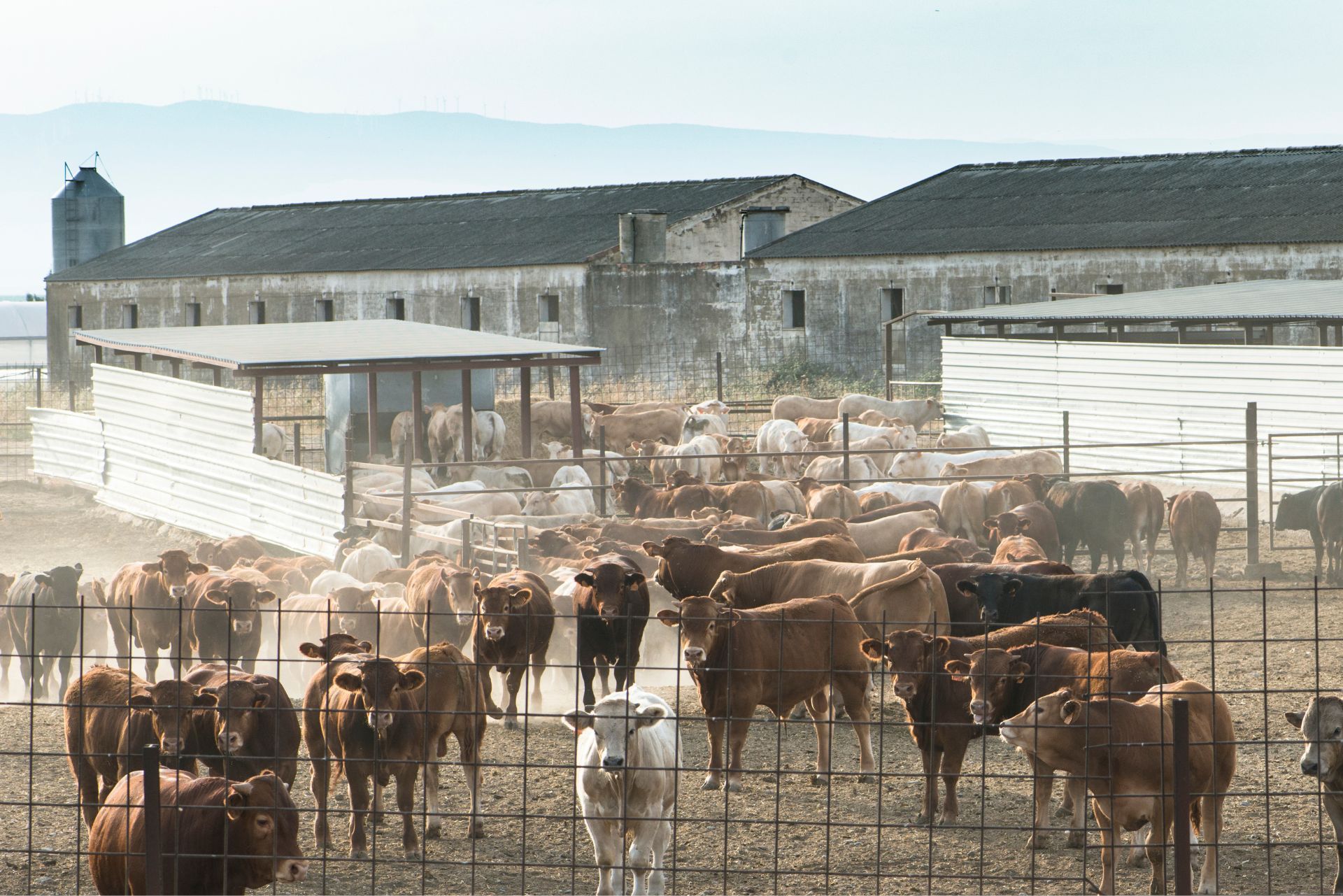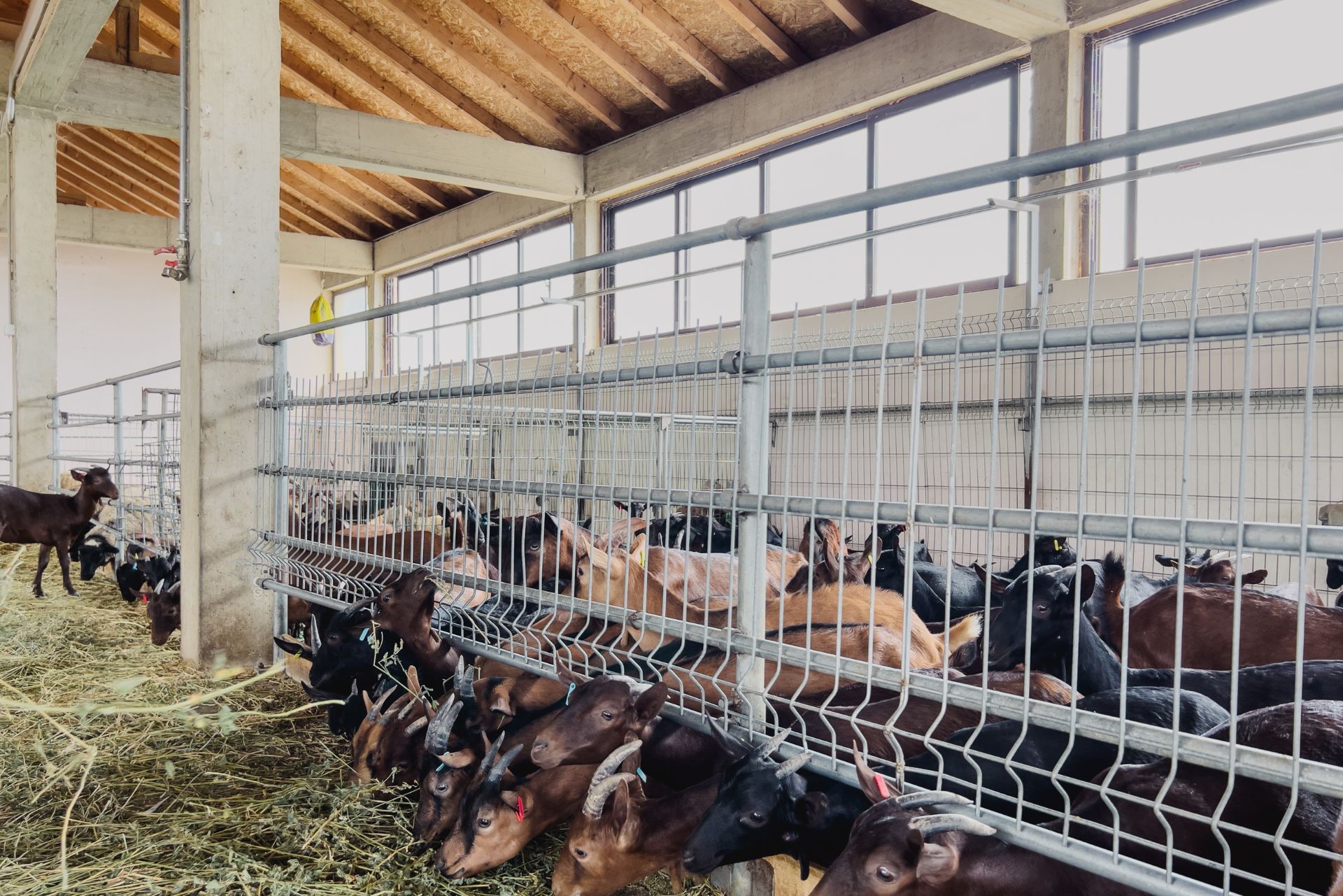
Top 3 Recommended Policies

In the vast and diverse landscape of Texas agriculture, livestock farming plays a pivotal role. With the rise of large-scale livestock operations, the need for specialized insurance has become increasingly evident. Texas Livestock Confinement Insurance is designed to protect farmers and ranchers from the unique risks associated with raising animals in confined environments. This article delves into the essential aspects of this insurance, providing a comprehensive overview for those involved in the livestock industry.
Understanding Livestock Confinement Insurance
Livestock Confinement Insurance is a specialized policy that covers various risks associated with raising livestock in confined spaces, such as barns, feedlots, and other enclosed facilities. Unlike traditional farm insurance, this type of coverage addresses the specific challenges and hazards that come with intensive livestock production. As the agricultural landscape evolves, the need for tailored insurance solutions becomes increasingly vital, especially for operations that rely heavily on confinement systems to maximize efficiency and productivity.
What Does It Cover?
This insurance typically covers a range of potential losses, including:
- Death or injury of livestock due to accidents, disease, or natural disasters.
- Property damage to confinement facilities caused by fire, vandalism, or severe weather.
- Loss of income due to business interruption stemming from covered events.
By understanding the coverage options available, livestock producers can tailor their policies to meet the unique needs of their operations. Additionally, many policies may offer optional endorsements that provide further protection, such as coverage for equipment breakdowns or liability for injuries that occur on the premises. This flexibility allows farmers to create a comprehensive safety net that aligns with their specific risk profiles and operational practices.
Why Is It Important?
The importance of Livestock Confinement Insurance cannot be overstated. With the increasing prevalence of biosecurity threats, such as disease outbreaks, and the potential for catastrophic events like storms or fires, having adequate insurance coverage is crucial. This insurance not only protects the financial investment in livestock but also ensures the sustainability of the farming operation. Furthermore, as consumer demand for ethically raised and sustainably produced livestock grows, producers must be prepared to navigate the complexities of compliance and risk management. Insurance can play a pivotal role in safeguarding against unforeseen circumstances that could jeopardize both the welfare of the animals and the viability of the business.
Moreover, the financial implications of livestock losses can be devastating. A single disease outbreak can lead to significant mortality rates, not only affecting the immediate herd but also leading to long-term repercussions on breeding programs and market reputation. By investing in Livestock Confinement Insurance, farmers can mitigate these risks and focus on their core operations, knowing they have a safety net in place. This peace of mind allows producers to innovate and improve their practices, ultimately contributing to a more resilient agricultural sector.

Key Considerations When Choosing a Policy
Selecting the right Livestock Confinement Insurance policy involves careful consideration of several factors. Each livestock operation is unique, and understanding these factors can help producers make informed decisions.
Assessing Your Risk
Before purchasing insurance, it’s essential to assess the specific risks associated with your operation. Factors to consider include:
- The type of livestock being raised.
- The scale of the operation and the number of animals housed.
- Geographic location and its susceptibility to natural disasters.
By identifying these risks, producers can better determine the coverage limits and types of policies that will best protect their investments. Additionally, it is advisable to evaluate the historical data related to livestock health and environmental conditions in your area. For instance, if your region has a history of severe storms or flooding, you may want to seek policies that offer specific protections against such events. Moreover, understanding the market trends and potential future risks can also play a significant role in shaping your insurance choices, ensuring that you are not only covered for current threats but also for those that may arise in the future.
Understanding Policy Exclusions
Every insurance policy comes with exclusions that outline what is not covered. Common exclusions in livestock confinement insurance may include:
- Losses due to neglect or improper care of animals.
- Incidents resulting from lack of maintenance of confinement facilities.
- Losses attributable to pre-existing conditions in livestock.
Understanding these exclusions is vital for ensuring that the policy provides adequate protection and that producers are not caught off guard in the event of a claim. Furthermore, it is beneficial to engage with an insurance agent who specializes in agricultural policies. They can provide clarity on the nuances of different policies and help identify any additional coverage options that might be available to mitigate these exclusions. For example, some insurers may offer endorsements or riders that can be added to a policy to cover specific risks that are otherwise excluded, such as coverage for disease outbreaks or biosecurity breaches, which are increasingly relevant in today's livestock management landscape.
Types of Livestock Confinement Insurance Policies
There are various types of policies available to livestock producers, each designed to address different needs and risks. Understanding these options can help farmers choose the best coverage for their operations.
Comprehensive Coverage Policies
Comprehensive coverage policies offer broad protection against a wide range of risks. These policies typically cover:
- Death of livestock due to accidents or disease.
- Damage to confinement facilities.
- Loss of income due to business interruptions.
Comprehensive policies are ideal for larger operations that require extensive coverage to protect their significant investments. Additionally, these policies often include provisions for liability coverage, which can safeguard producers against claims arising from injuries or damages caused by their livestock. This aspect is particularly crucial in today's litigious environment, where even minor incidents can lead to costly legal battles. Furthermore, many comprehensive policies allow for customization, enabling farmers to tailor their coverage to fit their specific operational needs, such as including coverage for specialized equipment or unique breeds of livestock.
Named Peril Policies
Named peril policies provide coverage for specific risks explicitly listed in the policy. Common perils include:
- Fire.
- Lightning.
- Windstorms.
While these policies are often more affordable, they may not provide adequate protection for all potential risks, making them more suitable for smaller operations with limited exposure. Farmers opting for named peril policies should conduct a thorough risk assessment of their operations to ensure that they are not leaving themselves vulnerable to unforeseen events. For instance, while a named peril policy may cover fire, it might exclude coverage for flooding or theft, which could be significant risks depending on the geographical location and operational practices. Additionally, these policies can sometimes be bundled with other types of insurance, such as crop insurance, offering a more comprehensive safety net at a competitive rate.
Factors Influencing Insurance Premiums
The cost of Livestock Confinement Insurance premiums can vary significantly based on several factors. Understanding these factors can help producers manage their insurance costs effectively.
Type and Number of Livestock
The type of livestock being raised and the number of animals can greatly influence insurance premiums. For example, high-value livestock such as breeding stock or show animals may incur higher premiums due to their increased risk and value. Additionally, larger operations with more animals may face higher premiums based on the overall risk exposure. Producers must also consider the specific breeds they raise; certain breeds may be more susceptible to diseases or environmental stressors, which can further impact the risk assessment by insurers. Moreover, diversification within livestock types can sometimes lead to more favorable premium rates, as it spreads the risk across different species.
Location and Environmental Factors
The geographic location of the livestock operation also plays a crucial role in determining premiums. Areas prone to natural disasters, such as hurricanes, floods, or wildfires, may see higher insurance costs. Furthermore, environmental factors such as climate and local wildlife can impact the likelihood of disease outbreaks, influencing premium rates as well. For instance, regions with a higher prevalence of certain pests or diseases may require additional coverage, thus raising the overall cost. Additionally, local regulations regarding livestock management and environmental protection can also affect insurance premiums, as compliance with stricter standards may necessitate additional coverage or risk mitigation measures. Understanding the local landscape not only helps in assessing risk but also in finding tailored insurance solutions that can better fit the unique challenges of a specific area.
Claim Process for Livestock Confinement Insurance
Understanding the claims process is essential for livestock producers to ensure they can effectively navigate any potential losses. The process typically involves several key steps, each designed to protect the interests of both the producer and the insurance company. Familiarity with these steps can significantly ease the stress associated with filing a claim during challenging times.
Documenting Losses
Accurate documentation is critical when filing a claim. Producers should maintain detailed records of their livestock, including health records, purchase receipts, and any relevant photographs of the confinement facilities. This documentation serves as evidence to support the claim and can expedite the process. Additionally, keeping a log of daily activities and any unusual occurrences can provide further context to the situation, helping insurance adjusters understand the full scope of the loss. It is also advisable to include any veterinary reports or assessments that may highlight the health status of the livestock prior to the incident, as these can be pivotal in substantiating the claim.
Notifying the Insurance Provider
Once a loss occurs, it’s important to notify the insurance provider as soon as possible. Most policies have specific timeframes within which claims must be reported. Failure to notify the insurer in a timely manner may result in denial of the claim. When contacting the insurance provider, producers should be prepared to provide a summary of the incident, including the date, nature of the loss, and any immediate actions taken. This initial communication sets the stage for the claims process, and being thorough can lead to a smoother experience. Furthermore, it is beneficial for producers to familiarize themselves with their policy details, as this knowledge can help them understand what is covered and what documentation may be required throughout the process.

Preventive Measures to Reduce Risk
While insurance provides a safety net, implementing preventive measures can significantly reduce the risk of losses and potentially lower insurance premiums. By proactively addressing potential hazards, producers can create a safer and more efficient operational environment, ultimately benefiting both their livestock and their bottom line.
Biosecurity Practices
Establishing robust biosecurity practices is essential for preventing disease outbreaks. This includes:
- Regular health checks for livestock.
- Controlling access to confinement areas.
- Implementing sanitation protocols for equipment and facilities.
By prioritizing biosecurity, producers can protect their livestock and minimize potential claims. Additionally, educating staff on the importance of biosecurity measures fosters a culture of responsibility and vigilance. Training sessions can cover topics such as recognizing early signs of illness, understanding the transmission of diseases, and the importance of reporting any unusual behavior in animals. This proactive approach not only safeguards the health of the herd but can also enhance the overall productivity of the operation.
Facility Maintenance
Regular maintenance of confinement facilities is crucial for preventing accidents and damage. This includes:
- Inspecting structures for wear and tear.
- Ensuring proper ventilation and waste management.
- Repairing any damages promptly.
Well-maintained facilities not only protect livestock but also demonstrate to insurers that the operation is being managed responsibly. Furthermore, investing in upgrades such as improved drainage systems or reinforced fencing can mitigate risks associated with extreme weather events or predator attacks. Conducting seasonal assessments allows producers to identify potential vulnerabilities and address them before they escalate into significant issues. By maintaining a proactive stance on facility upkeep, producers can create a safer environment that supports the health and welfare of their animals, ultimately leading to a more sustainable operation.
Future Trends in Livestock Confinement Insurance
The landscape of livestock confinement insurance is evolving, influenced by advancements in technology and changing industry practices. Staying informed about these trends can help producers adapt to the future of livestock farming.
Increased Use of Technology
Technology is playing an increasingly important role in livestock management and insurance. Innovations such as:
- Remote monitoring systems for livestock health.
- Data analytics for risk assessment.
- Blockchain for tracking livestock history.
These technologies can enhance biosecurity and improve overall farm management, potentially leading to lower insurance premiums and better coverage options. For instance, remote monitoring systems allow farmers to track the health and behavior of their livestock in real-time, enabling quicker responses to potential health issues. This proactive approach not only improves animal welfare but also reduces the likelihood of significant losses, which can be a crucial factor in determining insurance costs. Additionally, data analytics can provide insights into trends and patterns that help producers make informed decisions about their operations, further mitigating risks.
Focus on Sustainability
As the agricultural industry shifts towards more sustainable practices, insurance providers are beginning to recognize the importance of sustainability in risk assessment. Producers who implement environmentally friendly practices may find more favorable insurance terms and conditions. This shift is not just a trend but a response to increasing consumer demand for sustainably produced goods. Insurers are now looking at factors such as carbon footprints, waste management practices, and the use of renewable resources when evaluating policies. Furthermore, as regulatory frameworks around sustainability become more stringent, having a robust sustainability plan can not only enhance a producer's reputation but also serve as a competitive advantage in securing better insurance rates and coverage.
Conclusion
Texas Livestock Confinement Insurance is an essential component of risk management for livestock producers. By understanding the intricacies of this insurance, including coverage options, claims processes, and preventive measures, farmers can better protect their investments and ensure the sustainability of their operations. As the industry continues to evolve, staying informed about trends and advancements will be crucial for success in the ever-changing landscape of livestock farming.
Contact Us

